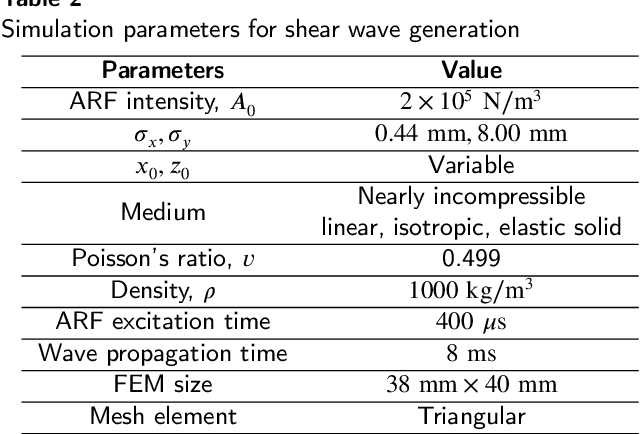Robust CNN Multi-Nested-LSTM Framework with Compound Loss for Patch-based Multi-Push Ultrasound Shear Wave Imaging and Segmentation
Paper and Code
Jul 30, 2024



Ultrasound Shear Wave Elastography (SWE) is a noteworthy tool for in-vivo noninvasive tissue pathology assessment. State-of-the-art techniques can generate reasonable estimates of tissue elasticity, but high-quality and noise-resiliency in SWE reconstruction have yet to demonstrate advancements. In this work, we propose a two-stage DL pipeline producing reliable reconstructions and denoise said reconstructions to obtain lower noise prevailing elasticity mappings. The reconstruction network consists of a Resnet3D Encoder to extract temporal context from the sequential multi-push data. The encoded features are sent to multiple Nested CNN LSTMs which process them in a temporal attention-guided windowing basis and map the 3D features to 2D using FFT-attention, which are then decoded into an elasticity map as primary reconstruction. The 2D maps from each multi-push region are merged and cleaned using a dual-decoder denoiser network, which independently denoises foreground and background before fusion. The post-denoiser generates a higher-quality reconstruction and an inclusion-segmentation mask. A multi-objective loss is designed to accommodate the denoising, fusing, and segmentation processes. The method is validated on sequential multi-push SWE motion data with multiple overlapping regions. A patch-based training procedure is introduced with network modifications to handle data scarcity. Evaluations produce 32.66dB PSNR, 43.19dB CNR in noisy simulation, and 22.44dB PSNR, 36.88dB CNR in experimental data, across all test samples. Moreover, IoUs (0.909 and 0.781) were quite satisfactory in the datasets. After comparing with other reported deep-learning approaches, our method proves quantitatively and qualitatively superior in dealing with noise influences in SWE data. From a performance point of view, our deep-learning pipeline has the potential to become utilitarian in the clinical domain.
 Add to Chrome
Add to Chrome Add to Firefox
Add to Firefox Add to Edge
Add to Edge